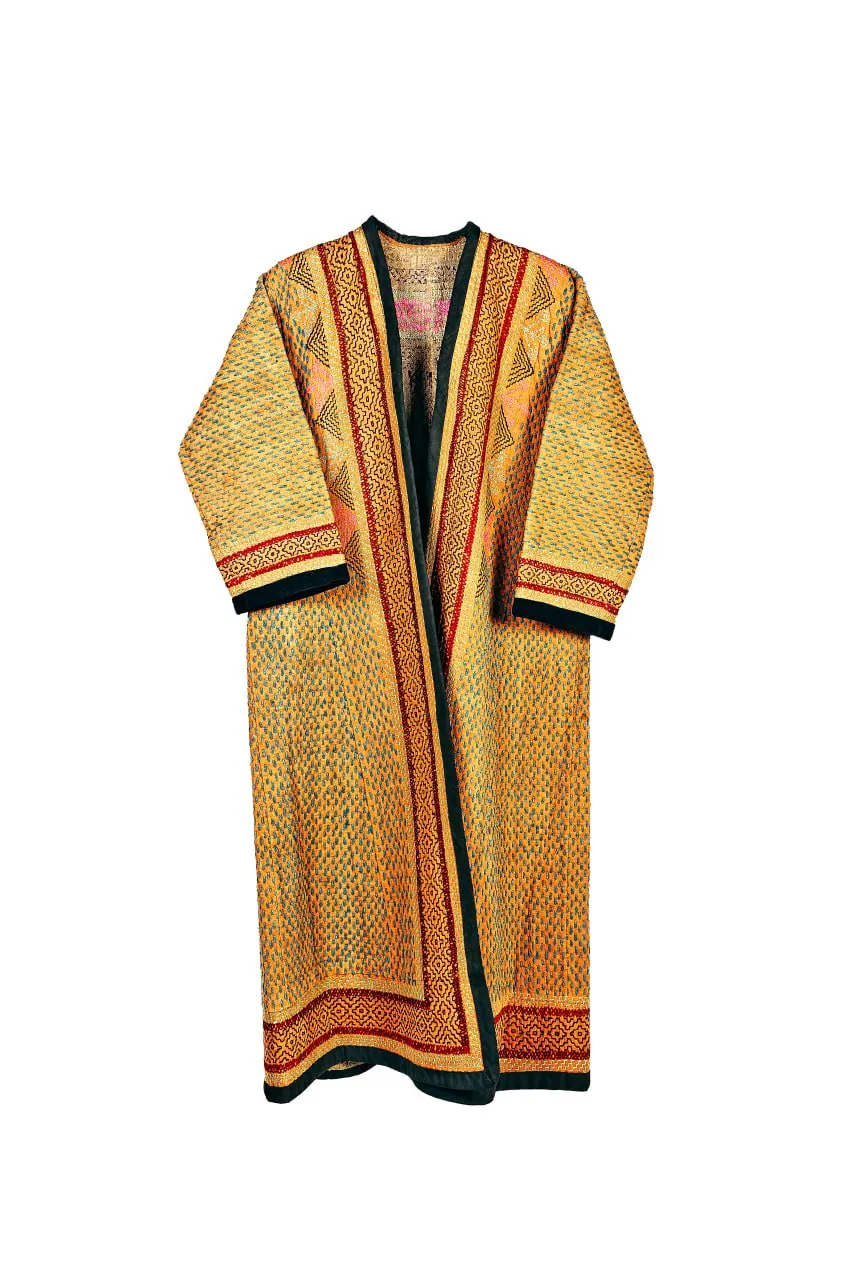For this purpose, museum exchanges, purchases of items, and scientific-gathering expeditions in various regions of the country were used. Archive materials and collection inventories of the Central Antireligious Museum show that in the late 1930s – early 1940s, several large collecting expeditions to Central Asia were organized. The first of them took place in 1936 and bore generous fruits. The collection of more than 80 items was received on February 18, 1937. The following items from this expedition are published in this edition: a paranja, laukh qalamdans, and covers for the Quran.
The list of items makes it possible to distinguish two thematic sets: the Sufi set and a set of items related to the Shia practice. The first included the following items published in the album: “a dervish robe with inscriptions of coloured silk threads, without lining; the sleeves are fringed with black velvet, the upper part – with black satin”; “a dervish cap, sewn from four parts, on a red base, with multicoloured embroidery, of a conical form”; “a dervish cap, sewn from four parts, on a red base, with hand-stitched white embroidery and black religious inscriptions”; a dervish belt – “on a red woollen base, embroidered with coloured silk, framed by a black narrow fringe, with a long string on one side, a belt on white-lined cloth”; and gems for a dervish belt “of jade rock”. The set of items related to the Shia practice is mainly represented by various attributes of the most important Shiite Islamic day of mourning – Ashura.
You can learn more about this topic in the book-album “The Collection of the State Museum of the History of Religion” (Volume XII) from the series “Cultural legacy of Uzbekistan in the world collections”.
The general sponsor of the project is the oilfield services company Eriell-Group.


